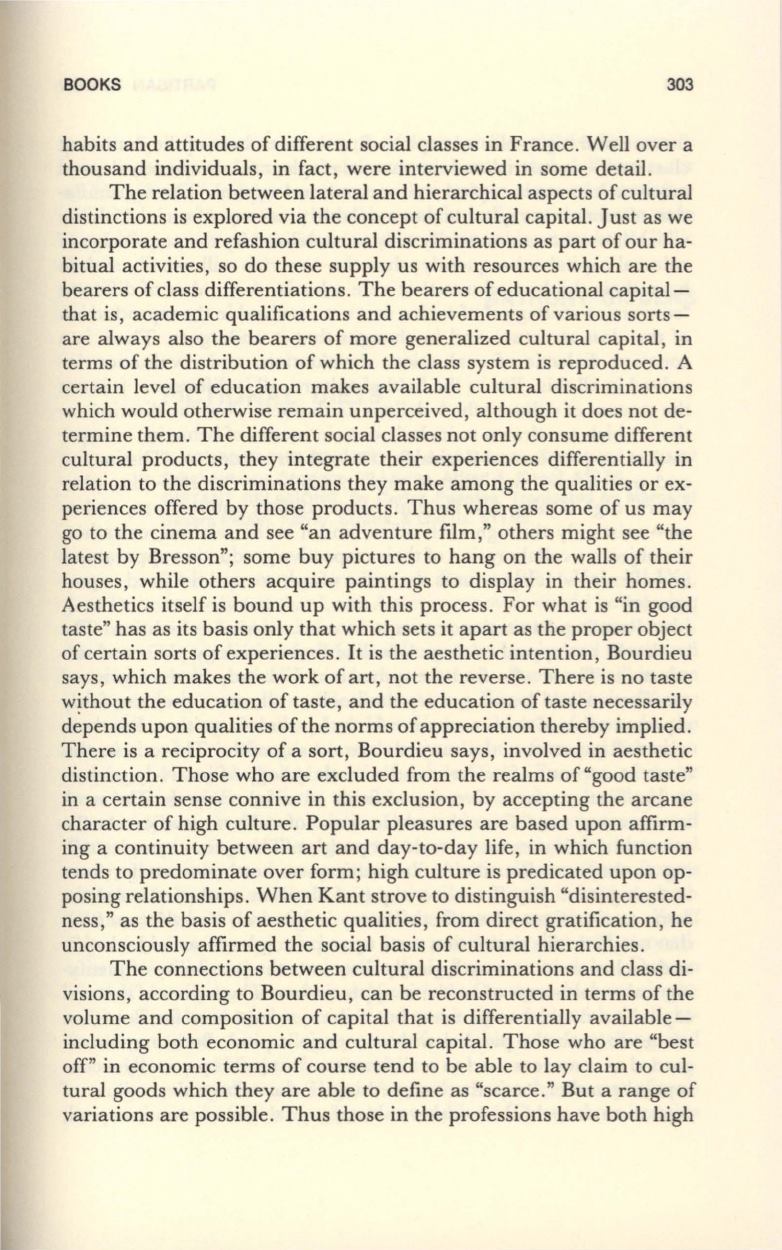
BOOKS
303
habits and attitudes of different social classes in France . Well over a
thousand individuals , in fact , were interviewed in some detail.
The relation between lateral and hierarchical aspects of cultural
distinctions is explored via the concept of cultural capital. Just as we
incorporate and refashion cultural discriminations as part of our ha–
bitual activities, so do these supply us with resources which are the
bearers of class differentiations . The bearers of educational capital–
that is , academic qualifications and achievements of various sorts–
are always also the bearers of more generalized cultural capital , in
terms of the distribution of which the class system is reproduced .
A
certain level of education makes available cultural discriminations
which would otherwise remain unperceived, although it does not de–
termine them. The different social classes not only consume different
cultural products, they integrate their experiences differentially in
relation to the discriminations they make among the qualities or ex–
periences offered by those products . Thus whereas some of us may
go to the cinema and see "an adventure film," others might see "the
latest by Bresson"; some buy pictures to hang on the walls of their
houses, while others acquire paintings to display in their homes .
Aesthetics itself is bound up with this process. For what is "in good
taste" has as its basis only that which sets it apart as the proper object
of certain sorts of experiences . It is the aesthetic intention, Bourdieu
says , which makes the work of art, not the reverse . There is no taste
w~thout
the education of taste, and the education of taste necessarily
depends upon qualities of the norms of appreciation thereby implied .
There is a reciprocity of a sort, Bourdieu says, involved in aesthetic
distinction . Those who are excluded from the realms of "good taste"
in a certain sense connive in this exclusion, by accepting the arcane
character of high culture. Popular pleasures are based upon affirm–
ing a continuity between art and day-to-day life, in which function
tends to predominate over form; high culture is predicated upon op–
posing relationships. When Kant strove to distinguish "disinterested–
ness," as the basis of aesthetic qualities , from direct gratification, he
unconsciously affirmed the social basis of cultural hierarchies .
The connections between cultural discriminations and class di–
visions, according to Bourdieu, can be reconstructed in terms of the
volume and composition of capital that is differentially available–
including both economic and cultural capital. Those who are "best
off" in economic terms of course tend to be able to lay claim to cul–
tural goods which they are able to define as "scarce." But a range of
variations are possible . Thus those in the professions have both high


